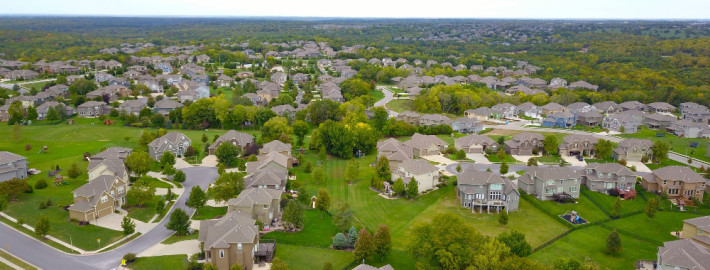Choosing the Right Neighborhood
By Marco Santarelli
Classifying a neighborhood by “type”, or what many investors refer to as a “grade”, is typically nothing more than a subjective description. Although most people will have a general idea of what is being referred to, in my experience it is usually nothing more than a qualitative rather than quantitative description. Because of that ambiguity, we’ve developed a proprietary, simple grading system that we use with all our investment-grade properties. To help you understand this, a basic overview and description follows:
NEIGHBORHOOD TYPES
Low Income (“C” and “D” grade neighborhoods)
Low income neighborhoods generally have a large portion of their residents on government assistance (for example Section 8 housing assistance). The ratio of renters to owner-occupied homes is greater than 50% and often as high as 80%. These neighborhoods are almost always the most affordable (lowest-priced) areas within a market and usually have some of the highest rent-to-value ratios.
This provides some of the highest cap rates and cash-oncash returns compared to other neighborhood types. You will find substantial area anchors including schools, churches and shopping in these neighborhoods. The anchors are there to meet the needs of the people that live there. Low income neighborhoods are best suited for the wholesale (flip) strategy.
Moderate Income (“B” grade neighborhoods)
Moderate income neighborhoods are similar to Low Income neighborhoods with one critical difference – higher home ownership. While low income areas have a large portion of their residents on government assistance, moderate income areas have a large portion of residents working in the blue-collar sector. This stabilizes the neighborhood and makes for a more attractive investment area.
The ratio of renters to owner-occupied homes is more balanced and closer to 50% for each. Area anchors are similar to low income neighborhoods but with home owners being anchors as well. Moderate income neighborhoods are best suited for the wholesale (flip) and buy-and-hold strategies.
Middle Income (“A” grade neighborhoods)
Completely different in almost every way to low income and moderate income neighborhoods. The biggest differences are homeownership and types of employment. Most of the residents own their homes in these neighborhoods and are employed in high-level blue-collar jobs or in the white-collar sector. Middle income areas are excellent for long-term holds because of the stable nature of the area and tenants.
The ratio of renters to owner-occupied homes is closer to 80% owners and 20% renters. Middle income areas will have a greater number of anchors that meet the wants of the people that live there. These include the three “Ms”: malls, movies and meals. Middle income neighborhoods are best suited for retail fix-andflips and buy-and-hold strategies.
HOME VALUES
Home values vary from market to market, and between neighborhoods within each market. So one should not choose a neighborhood based on the market values alone. It is usually best to target those neighborhoods where property values represent the affordable housing stock in the middle market.
These properties are often within desirable neighborhoods making them easy to lease, buy and sell. Properties in the upper-end of a market’s price spectrum often don’t provide desirable rates of return, while properties in the lower-end of a market’s price spectrum often provide some of the highest expected returns but with the risk of attracting some of the lowest-quality tenants.
SCHOOLS
When it comes to residential real estate investing, it is not as important to have top-rated schools as it is to have multiple schools located in the area. Too many investors put more weight and emphasis on the school’s rating than all the other factors which can be a mistake and cost you in lost opportunities.
While many of our investors choose properties in neighborhoods with some of the best school districts, when it comes to investment properties, often times these properties come at a premium price relative to the income it generates. Many renters are just not willing to pay premium rents for premium schools.
CRIME
Generally speaking, better neighborhoods (“A” and “B”) will have below average crime rates (both violent and property crimes). Although lower relative crime rates are certainly a desirable characteristic to have, it is not the most important factor in your neighborhood selection criteria.
Finally, if you’re working with a reputable company to help you find or provide you with investment-grade properties then they should be able to advise you on the various markets and neighborhoods as well as provide you with detailed information such as neighborhood characteristics and demographics.




